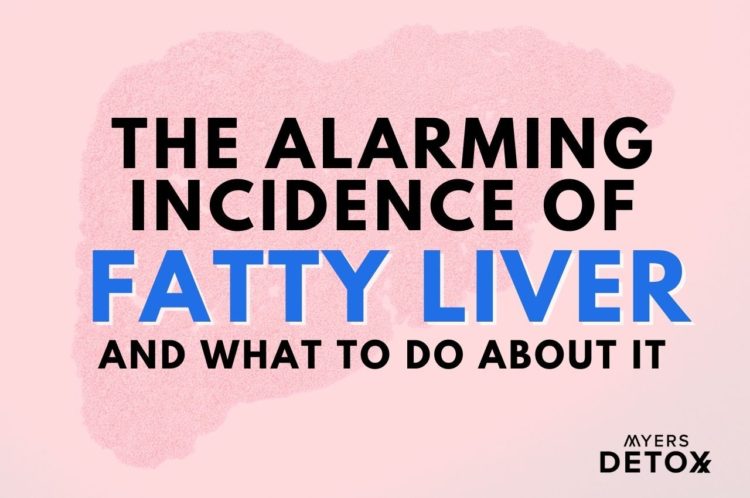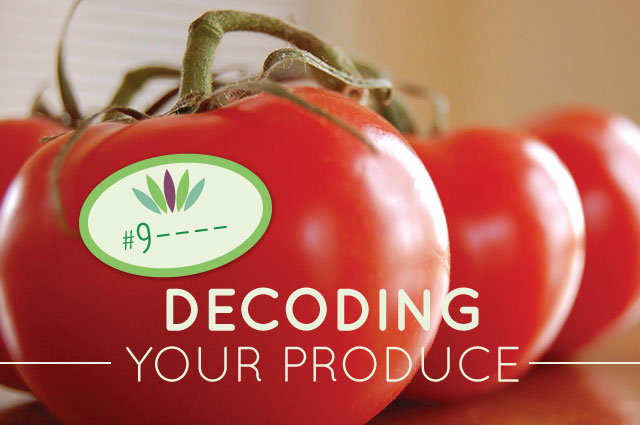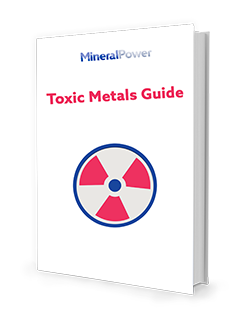The Alarming Incidence of Fatty Liver and What to Do About It

Incidences of diseases of affluence like heart disease, diabetes, and obesity continue to rise in the United States. While these metabolic conditions are well-known and understood, a lesser-known condition, fatty liver disease, is quickly becoming one of the largest threats to human health in the Western world.
Fatty liver disease is the result of metabolic dysfunction stemming from improper dietary and lifestyle patterns. And although you may not be familiar with this condition, it’s quickly become the most common liver disorder in industrialized countries[1].
In this article, you’ll learn:
- What fatty liver disease is, and how this condition becomes life-threatening
- The lifestyle and dietary factors that contribute to fatty liver
- Research-based strategies for protecting your liver
- The ultimate liver-health protocol to save your liver and optimize overall health
What Is Fatty Liver Disease?
There are two primary types of fatty liver disease, alcoholic fatty liver disease and non-alcoholic fatty liver disease (NAFLD). Alcoholic fatty liver disease is the result of excessive alcohol consumption, which leads your liver to develop fatty deposits. Non-alcoholic fatty liver disease, on the other hand, is a relatively new condition that’s related to diet and lifestyle choices.
NAFLD can be broken down into two more categories — simple fatty liver and Non-alcoholic steatohepatitis (NASH). While simple fatty liver is considered relatively harmless, NASH includes the presence of inflammation and sets the stage for more severe liver damage like fibrosis and cirrhosis.
The key feature of both alcoholic fatty liver and NAFLD is steatosis, which is the abnormal retention of fat in the liver. Steatosis occurs when there is a metabolic imbalance between the amount of fatty acid uptake and synthesis in the liver and the amount that’s oxidized and exported out of the liver. When this balance is off, it creates a situation where your liver retains excess fat, and when that fat content reaches 5%, it’s considered fatty liver[2][3].
When fatty liver disease progresses, it can result in fibrosis, which is the scarring of liver tissue due to damage. Scarred tissue can’t perform its functions properly, but if caught early enough, fibrosis may be reversed. When fibrosis progresses, it can turn into cirrhosis, which is severe scarring of the liver tissue that cannot be reversed. As scar tissue continues to build up, liver function slowly begins to fail, and in the latest stages of cirrhosis, this disease can be life-threatening[4].
While the cause of alcoholic fatty liver disease is pretty straightforward (excess alcohol consumption), exactly why you might develop NAFLD is not completely understood. With that being said, it is clear that lifestyle and dietary factors play a role and that caring for your liver may help to prevent this devastating condition[5].
The Alarming Rise In Fatty Liver Disease
It’s currently estimated that roughly 25% of adults in the United States have NAFLD, and about 20% of those cases have NASH, netting out to 5% of adults in the US with a potentially threatening liver condition[6].
The rising prevalence of NAFLD parallels the rising rates of obesity and diabetes in the US. In this way, NAFLD is a metabolic condition that can be attributed to diet and lifestyle factors[7].
There are several risk factors for fatty liver, including:
Diets High In Sugar
The standard American diet is riddled with processed foods that are packed with sugar. Research shows that one of the major contributors to fatty liver is the ingestion of sugar and high-fructose corn syrup (HFCS). In fact, studies have found a strong link between the severity of fibrosis in liver disease patients and their consumption of HFCS.
When you eat sugar, especially in its processed forms, it can stimulate the synthesis of fat in your liver. Since you can’t simultaneously store fat and break it down, this can lead to an accumulation of fat in the liver, with an impaired ability to break it down to be used as fuel[8][7].
Insulin Resistance
Insulin resistance is an almost universal finding in NAFLD due to the metabolic dysfunction that it causes. When your cells can’t recognize insulin’s signals, they won’t take up glucose (sugar) from your blood. As a result, blood glucose is sent back to your liver and is stored as fat.
At the same time, due to a lack of insulin signaling, free fatty acids are liberated for fuel (since your cells aren’t getting their energy from glucose) and sent to the liver for processing.
Therefore, insulin resistance can increase fat in the liver by:
- Increasing the synthesis of fat in your liver (due to excess glucose that’s not being taken up by cells).
- Decreased inhibition of fat liberation from your cells
Research shows that measures that implore insulin resistance tend to have a beneficial impact on fatty liver as well[9][10].
Sedentary Lifestyle
While diet plays a primary role in the onset of fatty liver, a sedentary lifestyle can make matters much worse and contribute to this disease’s progression. In fact, studies show that reduced habitual physical exercise is associated with liver fat accumulation independent of age, sex, and current BMI.
It’s well known that exercise has a direct correlation with systemic and skeletal muscle insulin sensitivity. This makes sense, as your body would need to prime itself to take up more glucose from your blood if you’re using up energy on a regular basis. However, when exercise takes a back-burner, your skeletal muscle becomes less sensitive to insulin, and glucose doesn’t get shuttled out of your blood as efficiently.
As we previously covered, excess glucose in the blood is cleared away by the liver and stored as fat. Even short-term reductions in physical activity can lead to a rapid reduction in insulin sensitivity[11].
Clinical trials have shown that both aerobic and resistance exercise reduce liver fat content through several mechanisms[12]:
- Improved insulin sensitivity, leading to less glucose being converted to fat in the liver.
- Increased free fatty acid oxidation in the liver, burning up the fat stores that are already there.
- Decreased fatty acid liberation from fat cells, along with reduced fatty acid synthesis in the liver (no need to produce or use fat for fuel if your cells can use glucose).
- Decreased oxidative stress and inflammation in liver cells.
Therefore, a sedentary lifestyle can inhibit all of the above beneficial processes and set the stage for NAFLD and NASH.
How To Support Your Liver
Although the outlook on liver disease may seem quite bleak, the good news is that since NAFLD is caused by diet and lifestyle, the power to protect and improve your liver’s health is in your hands. Below are a handful of research-backed ways to improve liver health and protect yourself from conditions like NAFLD.
#1 Consume An Anti-Inflammatory Diet
As mentioned earlier, there are two types of NAFLD, simple fatty liver and NASH. While simple fatty liver is relatively harmless, NASH can lead to fibrosis and cirrhosis. The primary difference between the two? Inflammation.
When your liver becomes inflamed, it can damage the tissue, eventually leading to scarring (fibrosis); if the insults continue long enough, that scarring can turn into cirrhosis, and you may experience loss of liver function.
The Standard American Diet (SAD) is highly inflammatory and sets you up for a greater risk for metabolic syndrome and its comorbidities (like NAFLD). Sugar, processed foods, and low-quality meat all contribute to the inflammatory nature of SAD[13].
Therefore, consuming a diet that focuses on anti-inflammatory foods is one of the most effective things you can do to promote liver health. Cut out sugar and processed foods that contribute to fat accumulation in the liver, and instead focus on naturally anti-inflammatory options like fatty fish, olive oil, berries, nuts, and leafy greens[14].
#2 Focus On Nutrients That Support Liver Health
While an anti-inflammatory diet can do wonders in alleviating inflammation, targeted nutrients can take your liver health to the next level.
In order to carry out one of its most vital functions, detoxification, your liver needs specific nutrients that promote phase one and phase two detox. You can find these nutrients in foods and herbs and take them as supplements to give your liver the extra boost it may need.
Phase one detoxification is all about neutralizing toxins so they are no longer harmful to your system. However, in this process, metabolites are often formed that are just as toxic (if not more so) than the original toxin. That’s where phase two detox comes in.
In phase two detox your liver neutralizes all toxic metabolites and then makes them water-soluble so they can be pulled out of your body once and for all.
As you can imagine, it’s vital that you support both arms of the detoxification process, or you may end up with a bunch of neutralized toxins and metabolites floating around.
Some foods that are known to support phase one detox include broccoli sprouts, cauliflower, brussels sprouts, turmeric, rosemary, blueberries, chicory root, and dandelion.
Foods that support phase two detox include cruciferous vegetables, dandelion, turmeric, citrus fruit, carrots, and spinach[15].
Of all the liver-promoting foods, broccoli sprouts are by far the most potent due to their high levels of an antioxidant compound called sulforaphane (SFN). SFN is a precursor to glutathione which is the most powerful antioxidant in your body and is crucial for both phases of detoxification[16].
When it comes to herbs, milk thistle is a clear winner for liver-health due to its antioxidant, anti-inflammatory, and immunomodulating effects. In addition, research shows that milk thistle has anti-fibrotic activity, protecting your liver tissue from scarring[17].
#3 Lose Excess Weight
Along with insulin resistance, obesity is another strong correlating factor that’s associated with NAFLD. Research shows that when patients lose weight, it can have a strong impact on their liver health and fatty liver disease progression.
In fact, with a moderate amount of weight loss, some NAFLD patients see improvements in liver enzymes, inflammation, and oxidative stress markers. Along with dietary changes, weight loss is highly recommended for most patients with NAFLD[18].
#4 Engage In Physical Activity
As previously mentioned, physical activity can profoundly impact insulin resistance and the metabolic dysfunction that leads to fatty liver. When you engage in exercise, it increases your cell’s ability to use glucose, thereby lowering the amount of glucose sent to your liver to be stored as fat. At the same time, exercise increases your fatty acid oxidation in your liver so you can burn off excess fat that’s stored there.
What’s more, research shows that physical activity can lower inflammation in your liver and protect your cells from damage[12].
Of course, an often welcome side effect of exercise is also weight loss, which will compound your liver-supportive efforts.
#5 Support Your Liver With a Liver Cleanse
Perhaps one of the most powerful ways to support liver health is to do a liver cleanse. Following a liver cleanse can give this vital organ the reboot it needs to start working more efficiently and provide it with the nutrients it needs for optimal detoxification.
When done properly, a liver cleanse will involve the incorporation of phase one and phase two nutrients, along with dietary guidelines (do’s and don’ts). A liver cleanse should generally take no more than two weeks, but you’ll feel the results for months, if not years, following.
Give Your Liver a Health-Promoting Overhaul
Your liver is responsible for over 500 vital functions in your body and is often one of the most under-appreciated organs. Every food you eat, drink you drink, and supplement or medication you take has to travel through your liver before it can be dispensed into systemic circulation.
Regardless of your current health status, if you live in modern society, your liver could use a little more love for all the work it does each day. And if you’ve been experiencing any issues with liver health, a reboot becomes twice as important.
That’s why I put together my 14-Day Liver Rehab Cleanse.* By supporting the liver and the body’s natural detoxification mechanisms, you help support optimal energy, a healthy immune system, healthy weight maintenance, balanced hormones, and more!
This two-week liver reboot provides you with everything you need to support your liver, along with educational material to empower you to be able to take care of your liver.
The 14-Day Liver Rehab Cleanse includes:
- 3 pre-recorded webinars that you can watch at your convenience
- Dietary guidance with foods to focus on and foods to avoid for optimal liver health
- How to cleanse to optimize weight loss
- An ultimate liver rescue e-library
- Top nutrients and supplements for supporting liver health, and which ones to avoid
- And much more
Takeaway
The startling rise of fatty liver disease in the United States is yet another call to action for a shift in the way that we, as a country, take care of ourselves.
There are several ways that you can begin to support the health of your liver, including limiting sugar and processed foods, increasing your exercise and movement, and making efforts to lose weight if you’re holding onto extra pounds.
With all of that being said, it can make it a whole lot easier to reach your health goals when your body is primed for success. Committing to a liver cleanse not only enhances the function of this vital organ but it supports your body as a whole, improving metabolic functions, energy utilization, and supporting immunity.
If you’re ready to make huge leaps to support your health and wellbeing, sign up for my 14-Day Liver Rehab Cleanse and start nourishing and protecting the hardest working organ in your body today.
*These statements have not been reviewed by the FDA. The 14-Day Liver Rehab Cleanse is not designed to treat, cure, or prevent any disease. It is not intended to replace any medication or healing modality prescribed by your medical doctor.
Click Here for References+
-
Nassir, Fatiha, et al. “Pathogenesis and prevention of hepatic steatosis.” Gastroenterology & hepatology 11.3 (2015): 167.
-
Donohue Jr, Terrence M. “Alcohol-induced steatosis in liver cells.” World Journal of Gastroenterology: WJG 13.37 (2007): 4974.
-
https://www.mayoclinic.org/diseases-conditions/cirrhosis/symptoms-causes/syc-20351487
-
Jensen, Thomas, et al. “Fructose and sugar: A major mediator of non-alcoholic fatty liver disease.” Journal of hepatology 68.5 (2018): 1063-1075.
-
Basaranoglu, Metin, Gokcen Basaranoglu, and Elisabetta Bugianesi. “Carbohydrate intake and nonalcoholic fatty liver disease: fructose as a weapon of mass destruction.” Hepatobiliary surgery and nutrition 4.2 (2015): 109.
-
Utzschneider, Kristina M., and Steven E. Kahn. “The role of insulin resistance in nonalcoholic fatty liver disease.” The Journal of Clinical Endocrinology & Metabolism 91.12 (2006): 4753-4761.
-
Manco, Melania. “Insulin resistance and NAFLD: A dangerous liaison beyond the genetics.” Children 4.8 (2017): 74.
-
Rector, R. Scott, and John P. Thyfault. “Does physical inactivity cause nonalcoholic fatty liver disease?.” Journal of applied physiology 111.6 (2011): 1828-1835.
-
van der Windt, Dirk J., et al. “The effects of physical exercise on fatty liver disease.” Gene expression 18.2 (2018): 89.
-
Schulze, Matthias B., et al. “Dietary pattern, inflammation, and incidence of type 2 diabetes in women–.” The American journal of clinical nutrition 82.3 (2005): 675-684.
-
https://www.health.harvard.edu/staying-healthy/foods-that-fight-inflammation
-
Hodges, Romilly E., and Deanna M. Minich. “Modulation of metabolic detoxification pathways using foods and food-derived components: a scientific review with clinical application.” Journal of nutrition and metabolism 2015 (2015).
-
Kikuchi, Masahiro, et al. “Sulforaphane-rich broccoli sprout extract improves hepatic abnormalities in male subjects.” World journal of gastroenterology 21.43 (2015): 12457.
-
Mulrow, C., et al. “Milk thistle: effects on liver disease and cirrhosis and clinical adverse effects: summary.” AHRQ Evidence Report Summaries. Agency for Healthcare Research and Quality (US), 2000.
-
Ghaemi, Alireza, et al. “How much weight loss is effective on nonalcoholic fatty liver disease?.” Hepatitis monthly 13.12 (2013).









